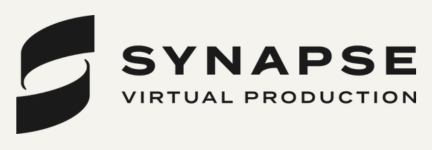
A Departure From Technology for Technology’s Sake

AI took the spotlight at CES 2024, but the resounding theme was responsible, human-centric development. Apple's reveal of the Apple Vision Pro prior to the event posed questions about the future of AR/VR/XR hardware, consumer uptake, and brand involvement.
CES highlighted the ongoing positive impact of emerging technology, particularly in healthcare innovation; an industry which warrants disruption perhaps more than any other. Meanwhile, pragmatism among consumers and companies was palpable – a departure from technology for technology’s sake, which some fell victim to in recent years amid the buzz of the metaverse and web3. Here are my three core takeaways:
Personal AR/VR/XR Hardware Evolution
On the eve of CES, Apple announced that its new Apple Vision Pro headset will be available next month. On the ground at CES, it was clear that there's going to be no shortage of personal hardware options entering the market over the coming years. Despite having had years of runway during which many competitors could have surged to the front, and indeed, many are trying – as evidenced on the ground at CES – Apple has once again asserted itself as the leader destined to dominate. Why? Because Apple understood that maybe people don't actually want to live in a fully immersed AR world but rather retain a sense of physical and emotional connection through spatial computing. And they want it to make their lives better. A simple formula, really.
While not everyone will rush to make the investment in the Vision Pro, Apple’s V1 product – like everything Apple does – is going to be so strong in its fidelity and execution that there will be a number of early adopters compelled to purchase. This will drive brands to build in the Apple app ecosystem, creating new apps or extensions of those that already exist.
Apple didn't jump to the moon – they looked at all the obvious things we can do better now. Apple solved for space. Vision Pro will eventually mean you can work from your desk with no screen, watch a movie on the sofa next to a loved one with no TV taking up space in the living room, have your grocery list on the wall of the kitchen – the list goes on. There's advice to CTOs and other leaders in that too. You don't need to jump to the moon either. What is the obvious shortcoming to be solved? Start there and use tech as the tool to empower you.
Revolutionising Healthcare Through Technology
As someone passionate about health, wellness, and access, one of the most uplifting aspects of CES was the nascent technology in the healthcare space. Individualised healthcare took flight during the pandemic, and while fortunately, that chapter is behind us, what remains is a conviction that technology can bring healthcare solutions into our homes and alleviate undue pressure on the medical sector. From human twins as digital representations of healthcare data to at-home checkups, AR and AI-based general wellness diagnostic tools, sleep tech, and more – technology continues to fulfil its most important role: protecting and enriching human life. As these technologies come to fruition, the integrated role of brand storytellers and technologists will become increasingly important and I’m excited to see our industry step up to the plate.
Learning from the Past to Shape the Future
While there’s no denying that social media has provided functional benefits, it ushered in an era of information overload, inflammatory debate, fake news, and other unintended consequences. This prompts parallels with AI development, raising concerns about what its own unintended consequences might be. If AI is built on the global consciousness via the internet, which may not accurately mirror humanity's true beliefs, does this set us on a positive or negative trajectory for the future?
AI took centre stage this year at CES, and while ideas and products were in abundance, I felt an overwhelming sense of pragmatism. I saw CTO’s, brands and agencies asking and exploring how tech becomes a vehicle for positive change and necessary transformation and having honest conversations about the not-so-glamorous possibilities, and how we can solve for them – in some cases, by using AI itself!
Dive deeper with John Brown, vice president of technology and Mike Creighton, executive director of innovation from Instrument in the Stagwell Content Studio at CES 2024. Interviewed by Justin Lewis, constellation chair at Stagwell.















